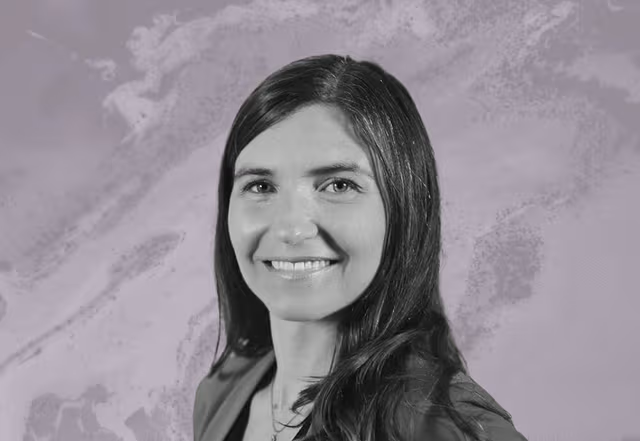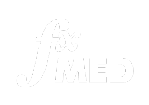The familiar public health message tells us to focus on calcium for strong bones. While this is true, it is an oversimplistic view of bone health.
In reality, many other nutrients are just as important. These bone-supporting vitamins and minerals work together as a team — along with calcium — to keep your bones strong and healthy from childhood through the older years.

How does calcium support bone health?
To understand how other nutrients contribute to the health of your bones, it’s helpful to start at the beginning with calcium. Calcium is the most abundant mineral found in your body. It is so tightly regulated that the body will break down bones if intake through diet or supplements is lacking.
Aside from being a major building block of bone, calcium also plays a role in cellular signalling.i You can find a small amount of calcium in your blood and cells, but close to 99 percent is found in your bones and teeth.ii
As you age, bone breakdown increases while bone formation slows down, especially in postmenopausal women. These changes result in bone mass loss and integrity issues. The association between calcium and bone health became a public health message after several studies found a positive connection between calcium intake in the diet and bone health. But what about the other nutrients they ate?
In reality, the relationship is not so black and white. An extensive review examining many different studies focused on the relationship between calcium intake bone health in the elderly found mixed results between calcium intake and risk of fracture. The authors found that calcium did not appear to be associated with a reduced risk of fracture. Thus, they concluded that the evidence supporting calcium supplements alone for bone health is weak at best.iii
So, should you skip calcium for healthy bones?
The answer is no. Calcium does matter for your bones, but it doesn’t work by itself.
There are noticeable benefits when calcium is combined with other nutrients. For example, a meta-analysis of studies that used calcium in combination with vitamin D illustrated the benefit of supplementation with both nutrients for reducing fracture risk, especially hip fractures.iv
These results suggest that while calcium is essential, one single nutrient isn’t enough. This conclusion makes sense because in the real world nutrients don’t exist in a vacuum. When you eat a meal, you take in vitamins and minerals that work synergistically together. So theoretically, your supplements should work similarly, as our body uses the combination of all of these nutrients to support our bone health.v

What other nutrients support strong bones?
Vitamin D3
As mentioned above, vitamin D has been well-studied for its positive impact on bone health, combined with calcium for supporting strength and fracture risk reduction.vi An essential fat-soluble vitamin, the primary source of vitamin D is through sun exposure since it’s challenging to get enough through the diet. However, because of skin pigmentation, sun protection, and climate differences, many people have suboptimal levels.
Osteoblasts, the cells that form bone, have vitamin D receptors on their surfaces.vii As a result, vitamin D may help support the formation of new bone cells and bone tissue.viii Vitamin D may also influence the expression of genes for bone protein and growth factors.ix Higher doses of vitamin D supplementation during pregnancy could even lead to stronger bones for children as they grow.x
Magnesium
Another less talked about mineral for bone support is magnesium. Magnesium works synergistically with other bone-building nutrients in the body. It’s especially beneficial for supporting bone mineral density, an important measurement for bone health. Magnesium may help with bone health because it impacts vitamin D activity and supports a healthy vitamin D status alongside calcium.xi
Studies show that lower levels of magnesium are associated with bone health concerns.xii Further, people who take in lower amounts of magnesium in their diet appear to have an increased risk of fracture and reduced bone mineral density. At the same time, supplementation supports bone mineral density and reductions in bone breakdown. xiii xiv
Zinc
Zinc is another trace mineral that contributes to your bone health.xv About thirty percent of the zinc in your body is found in bone.xvi Zinc is primarily found in high protein foods, especially shellfish.
In combination with calcium, vitamin D, and magnesium, zinc helps with bone mineralization.xvii Zinc supports the formation and regeneration of new bone by stimulating osteoblasts. It also helps to inhibit bone breakdown and is needed for optimal calcium absorption.xviii Conversely, suboptimal zinc levels are associated with reduced skeletal growth, bone density, and even lower levels of collagen synthesis.xix
Copper
Copper works in tandem with zinc — and the ratio of the two is essential for bone health and beyond. Once again, you may not immediately consider copper a bone-building nutrient, but it plays a role in building the enzymes needed for collagen to support the structure of bone.
Similar to zinc, copper also works by limiting the breakdown of bone.xx Without enough copper, the risk of bone health conditions is increased, and bones can grow abnormally because of the reduced enzyme production mentioned above.xxi
Vitamin C
While you may primarily think of vitamin C for its immune benefits, it also plays a role in your bone formation. Vitamin C (or ascorbic acid) intake through diet and supplementation is associated with supporting bone mineral density, especially in menopausal women. Its positive effects may be related to vitamin C’s ability to impact gene expression for bone matrix in osteoblasts.xxii
Manganese
Manganese is a trace metal that once again works synergistically with other bone supporting nutrients to support improvements in bone density. The studies on manganese for bone health are not as robust as compared to many other nutrients. Still, they do point towards its collaborative role. Manganese acts as a co-factor for building bone cartilage, collagen, and bone mineralisation.xxiii
Lower levels of manganese intake are associated with reduced bone density. And studies that used supplemental manganese combined with calcium, copper, and zinc saw improvements in bone maintenance after menopause, compared to a placebo group.xxiv

Vary your nutrients for bone health
As you can see, many different nutrients impact bone health. Supporting bones requires a balance of all of these nutrients. A diet rich in fresh produce, whole grains, and healthy protein will help to provide sources of these vitamins and minerals into your daily intake. However, supplementation can be especially beneficial to make sure you are meeting all your bone-nutrient needs.
i Jacobson, Jake, and Michael R. Duchen. “Interplay between Mitochondria and Cellular Calcium Signalling.” Molecular and Cellular Biochemistry 256–257, no. 1–2 (February 2004): 209–18. https://doi.org/10.1023/b:mcbi.0000009869.29827.df.
ii Intakes, Institute of Medicine (US) Standing Committee on the Scientific Evaluation of Dietary Reference. Calcium. Dietary Reference Intakes for Calcium, Phosphorus, Magnesium, Vitamin D, and Fluoride. National Academies Press (US), 1997. https://www.ncbi.nlm.nih.gov/books/NBK109827/.
iii Bolland, Mark J., William Leung, Vicky Tai, Sonja Bastin, Greg D. Gamble, Andrew Grey, and Ian R. Reid. “Calcium Intake and Risk of Fracture: Systematic Review.” BMJ (Clinical Research Ed.) 351 (September 29, 2015): h4580. https://doi.org/10.1136/bmj.h4580.
iv Weaver, C. M., D. D. Alexander, C. J. Boushey, B. Dawson-Hughes, J. M. Lappe, M. S. LeBoff, S. Liu, A. C. Looker, T. C. Wallace, and D. D. Wang. Osteoporosis International: A Journal Established as Result of Cooperation between the European Foundation for Osteoporosis and the National Osteoporosis Foundation of the USA 27, no. 1 (January 2016): 367–76. https://doi.org/10.1007/s00198-015-3386-5.
v Muñoz-Garach, Araceli, Beatriz García-Fontana, and Manuel Muñoz-Torres. Nutrients 12, no. 7 (July 3, 2020). https://doi.org/10.3390/nu12071986.
vi Islam, Md Zahirul, Abu Ahmed Shamim, Heli T. Viljakainen, Mohammad Akhtaruzzaman, Atia H. Jehan, Habib Ullah Khan, Ferdaus Ahmad Al-Arif, and Christel Lamberg-Allardt. “Effect of Vitamin D, Calcium and Multiple Micronutrient Supplementation on Vitamin D and Bone Status in Bangladeshi Premenopausal Garment Factory Workers with Hypovitaminosis D: A Double-Blinded, Randomised, Placebo-Controlled 1-Year Intervention.” The British Journal of Nutrition 104, no. 2 (July 2010): 241–47. https://doi.org/10.1017/S0007114510000437.
vii Lam, Nga N., Rahma Triliana, Rebecca K. Sawyer, Gerald J. Atkins, Howard A. Morris, Peter D. O’Loughlin, and Paul H. Anderson. “Vitamin D Receptor Overexpression in Osteoblasts and Osteocytes Prevents Bone Loss during Vitamin D-Deficiency.” The Journal of Steroid Biochemistry and Molecular Biology 144 Pt A (October 2014): 128–31. https://doi.org/10.1016/j.jsbmb.2014.01.002.
viii Leeuwen, J. P. van, M. van Driel, G. J. van den Bemd, and H. A. Pols. “Vitamin D Control of Osteoblast Function and Bone Extracellular Matrix Mineralization.” Critical Reviews in Eukaryotic Gene Expression 11, no. 1–3 (2001): 199–226.
ix M., Driel van, A. P. Pols H., and T. M. van Leeuwen J. P. “Osteoblast Differentiation and Control by Vitamin D and Vitamin D Metabolites.” Current Pharmaceutical Design 10, no. 21 (July 31, 2004): 2535–55.
x Brustad, Nicklas, Juri Garland, Jonathan Thorsen, Astrid Sevelsted, Martin Krakauer, Rebecca K. Vinding, Jakob Stokholm, Klaus Bønnelykke, Hans Bisgaard, and Bo L. Chawes. “Effect of High-Dose vs Standard-Dose Vitamin D Supplementation in Pregnancy on Bone Mineralization in Offspring Until Age 6 Years: A Prespecified Secondary Analysis of a Double-Blinded, Randomized Clinical Trial.” JAMA Pediatrics 174, no. 5 (May 1, 2020): 419–27. https://doi.org/10.1001/jamapediatrics.2019.6083.
xi Dai, Qi, Xiangzhu Zhu, JoAnn E. Manson, Yiqing Song, Xingnan Li, Adrian A. Franke, Rebecca B. Costello, et al. “Magnesium Status and Supplementation Influence Vitamin D Status and Metabolism: Results from a Randomized Trial.” The American Journal of Clinical Nutrition 108, no. 6 (December 1, 2018): 1249–58. https://doi.org/10.1093/ajcn/nqy274.
xii Rondanelli, Mariangela, Milena Anna Faliva, Alice Tartara, Clara Gasparri, Simone Perna, Vittoria Infantino, Antonella Riva, Giovanna Petrangolini, and Gabriella Peroni. “An Update on Magnesium and Bone Health.” Biometals: An International Journal on the Role of Metal Ions in Biology, Biochemistry, and Medicine, May 6, 2021. https://doi.org/10.1007/s10534-021-00305-0.
xiii Carpenter, Thomas O., Maria C. DeLucia, Jane Hongyuan Zhang, Gina Bejnerowicz, Lisa Tartamella, James Dziura, Kitt Falk Petersen, Douglas Befroy, and Dorothy Cohen. “A Randomized Controlled Study of Effects of Dietary Magnesium Oxide Supplementation on Bone Mineral Content in Healthy Girls.” The Journal of Clinical Endocrinology and Metabolism 91, no. 12 (December 2006): 4866–72. https://doi.org/10.1210/jc.2006-1391.
xiv Aydin, Hasan, Oğuzhan Deyneli, Dilek Yavuz, Hülya Gözü, Nilgün Mutlu, Işik Kaygusuz, and Sema Akalin. Biological Trace Element Research 133, no. 2 (February 2010): 136–43. https://doi.org/10.1007/s12011-009-8416-8.
xv O’Connor, J. Patrick, Deboleena Kanjilal, Marc Teitelbaum, Sheldon S. Lin, and Jessica A. Cottrell. “Zinc as a Therapeutic Agent in Bone Regeneration.” Materials (Basel, Switzerland) 13, no. 10 (May 12, 2020). https://doi.org/10.3390/ma13102211.
xvi King, J. C., D. M. Shames, and L. R. Woodhouse. “Zinc Homeostasis in Humans.” The Journal of Nutrition 130, no. 5S Suppl (May 2000): 1360S-6S. https://doi.org/10.1093/jn/130.5.1360S.
xvii Nielsen, Forrest H., Henry C. Lukaski, LuAnn K. Johnson, and Z. K. Fariba Roughead. “Reported Zinc, but Not Copper, Intakes Influence Whole-Body Bone Density, Mineral Content and T Score Responses to Zinc and Copper Supplementation in Healthy Postmenopausal Women.” The British Journal of Nutrition 106, no. 12 (December 2011): 1872–79. https://doi.org/10.1017/S0007114511002352.
xviii Yamaguchi, Masayoshi. Molecular and Cellular Biochemistry 338, no. 1–2 (May 2010): 241–54. https://doi.org/10.1007/s11010-009-0358-0.
xix Alghadir, Ahmad H., Sami A. Gabr, Einas S. Al-Eisa, and Muaz H. Alghadir. “Correlation between Bone Mineral Density and Serum Trace Elements in Response to Supervised Aerobic Training in Older Adults.” Clinical Interventions in Aging 11 (2016): 265–73. https://doi.org/10.2147/CIA.S100566.
xx Rył, Aleksandra, Tomasz Miazgowski, Aleksandra Szylińska, Agnieszka Turoń-Skrzypińska, Alina Jurewicz, Andrzej Bohatyrewicz, and Iwona Rotter. “Bone Health in Aging Men: Does Zinc and Cuprum Level Matter?” Biomolecules 11, no. 2 (February 8, 2021). https://doi.org/10.3390/biom11020237.
xxi Pepa, Giuseppe Della, and Maria Luisa Brandi. “Microelements for Bone Boost: The Last but Not the Least.” Clinical Cases in Mineral and Bone Metabolism 13, no. 3 (2016): 181–85. https://doi.org/10.11138/ccmbm/2016.13.3.181.
xxii Aghajanian, Patrick, Susan Hall, Montri D. Wongworawat, and Subburaman Mohan. “The Roles and Mechanisms of Actions of Vitamin C in Bone: New Developments.” Journal of Bone and Mineral Research : The Official Journal of the American Society for Bone and Mineral Research 30, no. 11 (November 2015): 1945–55. https://doi.org/10.1002/jbmr.2709.
xxiii Palacios, Cristina. “The Role of Nutrients in Bone Health, from A to Z.” Critical Reviews in Food Science and Nutrition 46, no. 8 (2006): 621–28. https://doi.org/10.1080/10408390500466174.
xxiv Rondanelli, Mariangela, Milena Anna Faliva, Gabriella Peroni, Vittoria Infantino, Clara Gasparri, Giancarlo Iannello, Simone Perna, Antonella Riva, Giovanna Petrangolini, and Alice Tartara. “Essentiality of Manganese for Bone Health: An Overview and Update.” Natural Product Communications 16, no. 5 (May 1, 2021): 1934578X211016649. https://doi.org/10.1177/1934578X211016649.
Share:
Related Posts

Goodbye Pie Chart, Hello Phase 1 Sliders
Written by Allison Smith, ND | 2025 As we usher in a new era of DUTCH testing which leaves behind the concept of the three-way

Introducing the DUTCH Dozen
Written by Kelly Ruef, ND | 2025 Hormone testing can be complex, which is why Precision Analytical developed the DUTCH Dozen, an interpretive framework that

DUTCH Report Enhancements
Written by Hilary Miller, ND | 2025 Precision Analytical have released the newest version of the DUTCH Test. This is the report’s most significant update

Gallbladder Health 101: What It Does and How to Keep It Working Well
Written by Ashley Palmer & Pooja Mahtani | 2025 The gallbladder may not get much attention compared to the gut, but it plays a central

Can You Bring Vitamins on a Plane? How To Travel with Supplements
Written by Austin Ruff | 2024 Are you traveling for a work conference, an athletic competition, or a weekend getaway? Just because you’re leaving home

